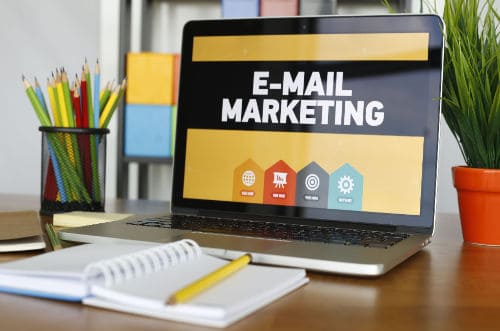If you’re like most small business owners, you’re always on the lookout for ways to make the most out of your limited marketing budget. However, email marketing may be one essential, budget-friendly tool you may be overlooking, with an astonishing average return of $42 for every $1 spent.
But, just because email marketing is relatively cheap, if it isn’t done correctly, your dollars will still go straight down the drain. Don’t fret! We’re here to let you in on some common reasons email campaigns don’t work and what can be done to fix them.
1. Your emails aren’t personalized.
We’ve covered adding personalization to your email campaigns in the past, but with personalization increasing revenue from email campaigns around 760%, we thought it would be worth mentioning again. Think about it – when you’re going through your inbox, your eyes tend to skip over the generic “salesy”-looking emails for the ones that matter – ones from your friends, family, etc. Well, imagine being one of the senders your customers actually look for?!
How do you accomplish this? By giving them information they actually want! Recommend products and services that they didn’t even know they desperately need until they opened your email. Hook them back with an incredible coupon on the item they left abandoned in their cart. Even just using their name can go further in better connecting with your audience through email.
2. You’re not being transparent enough.
With recent backlash against Google and Facebook over privacy concerns, it should come as no surprise that ensuring that your are 100% transparent in your email marketing efforts is crucial for success. Transparency with email marketing means that you don’t use sneaky ways to get email addresses, or sign up customers for your email list without their expressed consent. Always allow your customers to opt-in – bonus points if you also let them choose what types of email they would like to receive.
3. You aren’t sending at the right time.
Timing matters when it comes to email marketing, as hitting the “Send” button at the best time can have a huge impact on open rates, click rates, and overall revenue generation of your email campaign. Studies show that Tuesdays and Thursdays are the best days to send marketing emails, and mid-morning and mid-afternoon, when people tend to take breaks, are the best times. However, you’ll need to do your own analytical work and testing to determine when is the best day and time to send for your particular target audience.
4. You aren’t deleting inactive subscribers.
More subscribers doesn’t always mean better results – hanging onto subscribers who haven’t interacted with your emails in months, or even years, can negatively impact your email campaign’s deliverability and paint an inaccurate picture of your metrics. Make it a practice to update your email list at least twice a year.
5. You aren’t measuring performance.
The work isn’t over once you have sent your marketing emails to your recipient’s inbox; you need to analyze some key metrics to make sure you are getting the most out of your efforts. Some important email benchmarks that you should pay attention to are:
- Open rate
- Click rate
- Unsubscribe rate
- Bounce rate
If you aren’t seeing the results that you’re looking for from your email campaign, it’s probably time to switch it up a bit. Try different subject lines, varying up the content, and adding in discounts and coupons and see if it makes a difference. After all, you don’t want to be spending precious time and your marketing budget on a strategy that doesn’t work.
Need help boosting your email campaigns? Our team of marketing strategists are at your fingertips! Contact us today!


